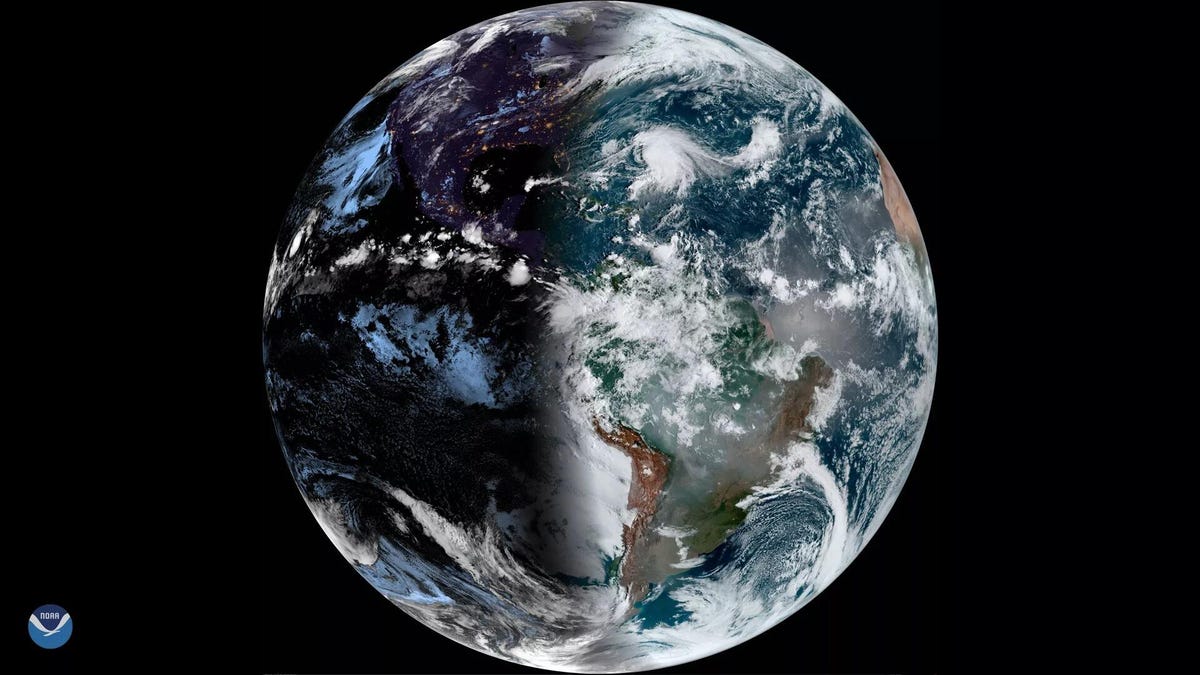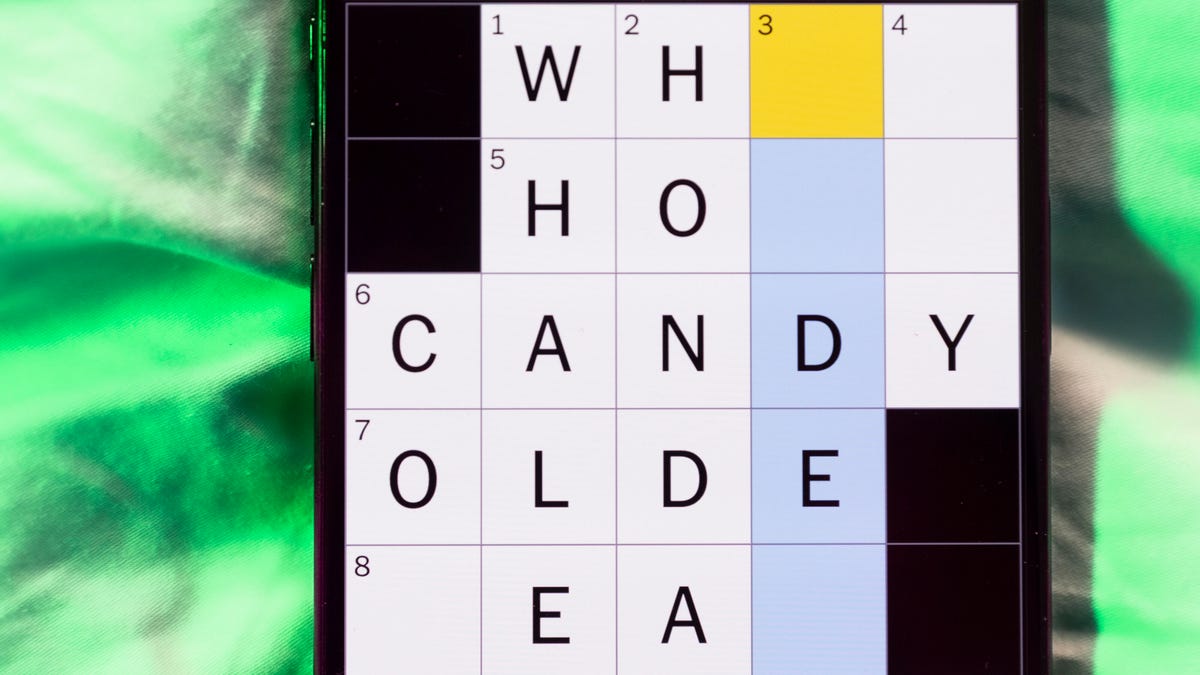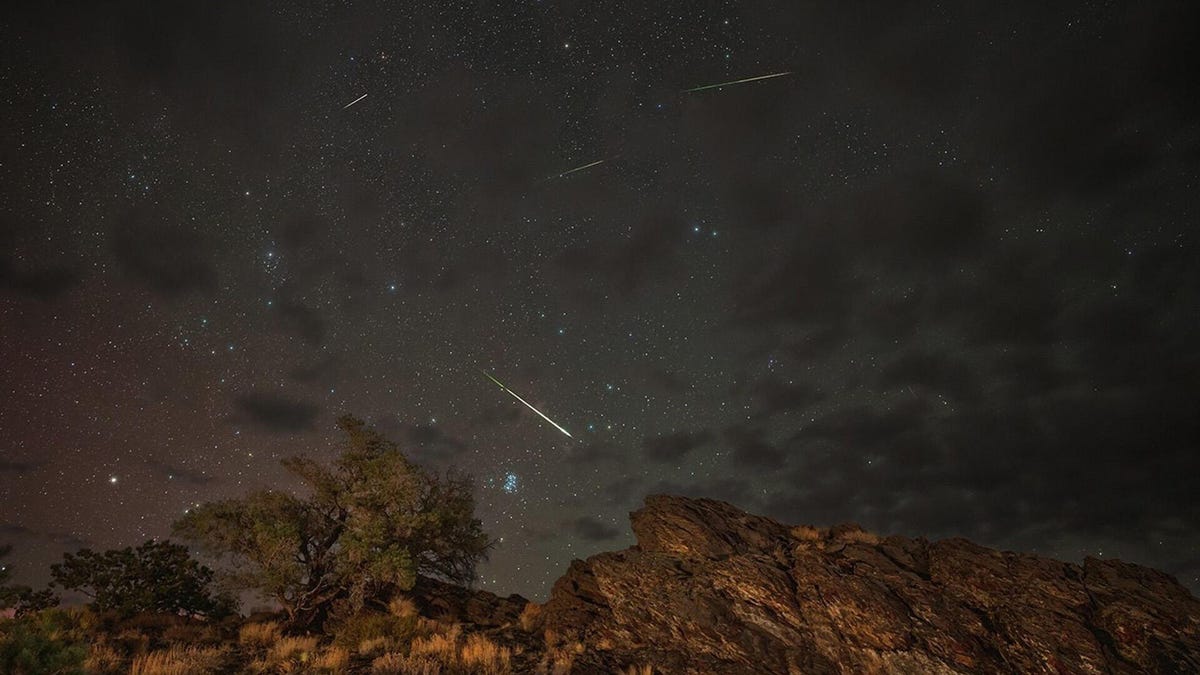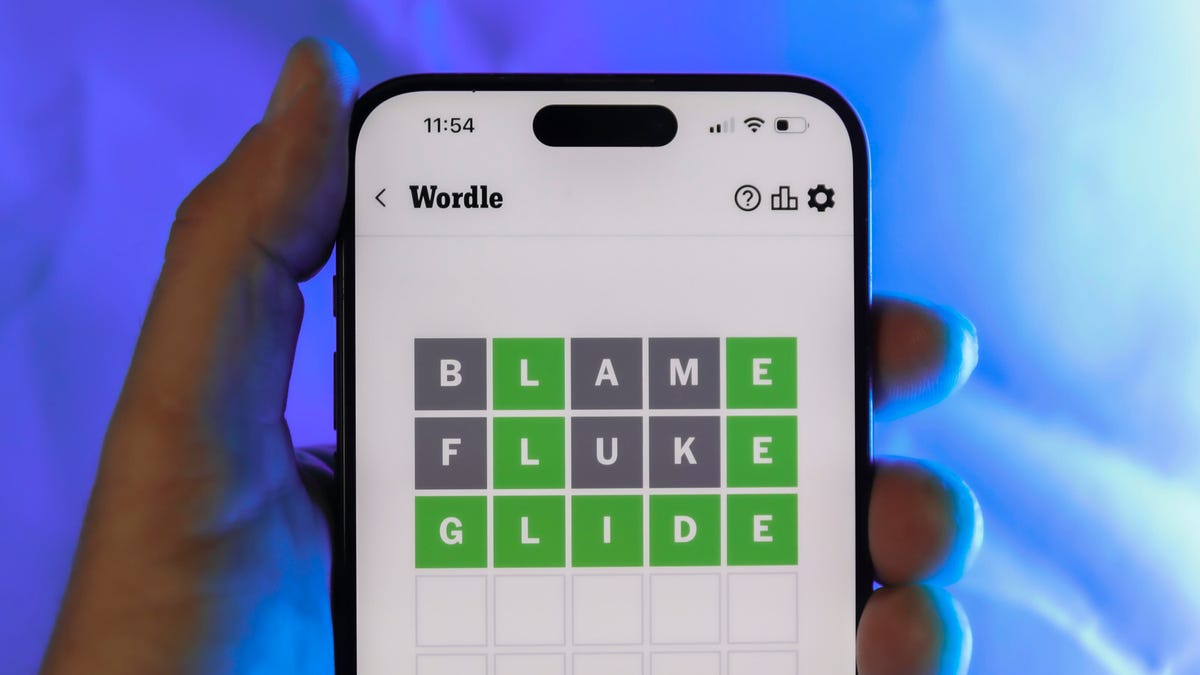Technologies
Fall Equinox Is Next Week: What It Is and What It Looks Like
Marking the arrival of fall in the Northern Hemisphere, the equinox arrives Sept. 22.

While the weather is still warm almost everywhere and the leaves have yet to turn, fall is almost here. The official arrival of the season is the autumnal equinox, which occurs in the Northern Hemisphere next week.
After a hot summer, the September equinox marks a welcome shift in the seasons for many folks. But what exactly is an equinox? It’s all about Earth and its relationship with the sun. Here’s how to understand, visualize and celebrate the autumnal equinox.
Don’t miss any of our unbiased tech content and lab-based reviews. Add CNET as a preferred Google source.
When is the September equinox?
This year, the autumnal equinox in the Northern Hemisphere falls on Monday, Sept. 22. If you want to be extra specific and mark it on your calendar, mark it for 11:19 a.m. PT.
Dates can shift slightly for equinoxes depending on the year, but it’s always around this time in September. The next vernal equinox in the Northern Hemisphere takes place on March 20, 2026, and will mark the start of spring.
What is the fall equinox?
The meaning of equinox is right there in the name: a combination of the Latin words for equal and night.
«There are only two times of the year when the Earth’s axis is tilted neither toward nor away from the sun, resulting in a ‘nearly’ equal amount of daylight and darkness at all latitudes,» the National Weather Service said in an explainer about the seasons.
The Earth spins on an axis (imagine a line running from pole to pole) and the planet sports a jaunty 23.5-degree tilt. The tilt is what gives us seasons. As the Earth orbits the sun, the tilt means some areas of the planet get more direct sunlight than others. That’s how it can be summer in the Northern Hemisphere (tilted toward the sun) and winter in the Southern Hemisphere (tilted away from the sun) at the same time. During the equinox, the sun shines straight at the equator and gives equal love to the two hemispheres.
Other planets that are also tilted on their axes of rotation also experience equinoxes. The time scales can be very different, however. An equinox on Saturn only comes around about every 15 Earth years. That means each season lasts for over seven years on Saturn. It’s even wilder on Neptune, which has seasons that last decades. We can be grateful for the relatively short seasons on our planet.
What does the equinox look like?
Wherever you are on Earth on the day of the equinox (and whether it’s a spring or fall equinox, depending on which hemisphere you live in), the sun will rise as close to east and set as close to west as possible, making it a foolproof compass. Go outside and watch the sunset and sunrise, and make a note of the landmarks in front of the sun. That way, you’ll always know what exactly is west and east.
The two annual equinoxes also feature the fastest sunrise and sunset of the year, with the sun taking just a few seconds to appear and disappear. That’s because this is the steepest angle at which the sun rises and sets during the year.
How is the equinox different from the solstices?
As with equinoxes, solstices are associated with Earth’s tilt, but instead of daylight and nighttime being even, the days and nights are at their extremes. The winter solstice is the shortest day of the year, while the summer solstice is the longest. This year, the winter solstice for the Northern Hemisphere falls on Sunday, Dec. 21.
What does the autumn equinox look like from space?
Earth-watching satellites up in orbit have a unique view of the equinox. A NASA Earth Observatory video shows Earth from space and how the positioning of the sun’s light shifts with the changing of the seasons. It’s a great way to visualize what’s happening during our planet’s orbit around the sun.
Celebrating the fall equinox
Equinoxes aren’t like eclipses or meteors. There isn’t a big wow moment when you see something spectacular. The fall equinox this year will look like any other day, but it’s a handy way to mark the changing of the astronomical seasons. You can go around and declare, «It’s officially the first day of autumn!» How you celebrate is up to you. Here’s a suggestion: Put on your favorite sweater, go for a scenic foliage drive and sip a pumpkin spice latte to welcome fall in style.
Technologies
Today’s NYT Mini Crossword Answers for Wednesday, Dec. 24
Here are the answers for The New York Times Mini Crossword for Dec. 24.

Looking for the most recent Mini Crossword answer? Click here for today’s Mini Crossword hints, as well as our daily answers and hints for The New York Times Wordle, Strands, Connections and Connections: Sports Edition puzzles.
Need some help with today’s Mini Crossword? I’m Irish-American, but yet 6-Down, which involves Ireland, stumped me at first. Read on for all the answers.. And if you could use some hints and guidance for daily solving, check out our Mini Crossword tips.
If you’re looking for today’s Wordle, Connections, Connections: Sports Edition and Strands answers, you can visit CNET’s NYT puzzle hints page.
Read more: Tips and Tricks for Solving The New York Times Mini Crossword
Let’s get to those Mini Crossword clues and answers.
Mini across clues and answers
1A clue: Wordle or Boggle
Answer: GAME
5A clue: Big Newton
Answer: ISAAC
7A clue: Specialized vocabulary
Answer: LINGO
8A clue: «See you in a bit!»
Answer: LATER
9A clue: Tone of many internet comments
Answer: SNARK
Mini down clues and answers
1D clue: Sharks use them to breathe
Answer: GILLS
2D clue: From Singapore or South Korea, say
Answer: ASIAN
3D clue: Large ocean ray
Answer: MANTA
4D clue: ___ beaver
Answer: EAGER
6D clue: Second-largest city in the Republic of Ireland, after Dublin
Answer: CORK
Don’t miss any of our unbiased tech content and lab-based reviews. Add CNET as a preferred Google source.
Technologies
Quadrantids Is a Short but Sweet Meteor Shower Just After New Year’s. How to See It
This meteor shower has one of the most active peaks, but it doesn’t last for very long.

The Quadrantids has the potential to be one of the most active meteor showers of the year, and skygazers won’t have long to wait to see it. The annual shower is predicted to reach maximum intensity on Jan. 3. And with a display that can rival Perseids, Quadrantids could be worth braving the cold to see it.
Don’t miss any of our unbiased tech content and lab-based reviews. Add CNET as a preferred Google source.
The show officially begins on Dec. 28 and lasts until Jan. 12, according to the American Meteor Society. Quadrantids is scheduled to peak on Jan. 2-3, when it may produce upwards of 125 meteors per hour. This matches Perseids and other larger meteor showers on a per-hour rate, but Quadrantids also has one of the shortest peaks at just 6 hours, so it rarely produces as many meteors overall as the other big ones.
The meteor shower comes to Earth courtesy of the 2003 EH1 asteroid, which is notable because most meteor showers are fed from comets, not asteroids. Per NASA, 2003 EH1 is a near-Earth asteroid that orbits the sun once every five and a half years. Science posits that 2003 EH1 was a comet in a past life, but too many trips around the sun stripped it of its ice, leaving only its rocky core. The Earth runs through EH1’s orbital debris every January, which results in the Quadrantids meteor shower.
How and where to see Quadrantids
Quadrantids is named for the constellation where its meteors appear to originate, a point known as the radiant. This presents another oddity, as the shower originates from the constellation Quadrans Muralis. This constellation ceased to be recognized as an official constellation in the 1920s and isn’t available on most publicly accessible sky maps.
For the modern skygazer, you’ll instead need to find the Bootes and Draco constellations, both of which contain stars that were once a part of the Quadrans Muralis. Draco will be easier to find after sunset on the evening of Jan. 2, and will be just above the horizon in the northern sky. Bootes orbits around Draco, but will remain under the horizon until just after 1 a.m. local time in the northeastern sky. From that point forward, both will sit in the northeastern part of the sky until sunrise. You’ll want to point your chair in that direction and stay there to see meteors.
As the American Meteor Society notes, Quadrantids has a short but active peak, lasting around 6 hours. The peak is expected to start around 4 p.m. ET and last well into the evening. NASA predicts the meteor shower to start one day later on Jan. 3-4, so if you don’t see any on the evening of Jan. 2, try again on Jan. 3.
To get the best results, the standard space viewing tips apply. You’ll want to get as far away from the city and suburbs as possible to reduce light pollution. Since it’ll be so cold outside, dress warmly and abstain from alcoholic beverages, as they can affect your body temperature. You won’t need any binoculars or telescopes, and the reduced field of view may actually impact your ability to see meteors.
The bad news is that either way, the Quadrantids meteor shower coincides almost perfectly with January’s Wolf Moon, which also happens to be a supermoon. This will introduce quite a lot of light pollution, which will likely drown out all but the brightest meteors. So, while it may have a peak of over 100 meteors per hour, both NASA and the AMS agree that the more realistic expectation is 10 or so bright meteors per hour.
Technologies
Today’s Wordle Hints, Answer and Help for Dec. 24, #1649
Here are hints and the answer for today’s Wordle for Dec. 24, No. 1,649.

Looking for the most recent Wordle answer? Click here for today’s Wordle hints, as well as our daily answers and hints for The New York Times Mini Crossword, Connections, Connections: Sports Edition and Strands puzzles.
Today’s Wordle puzzle is a little tricky, with a double letter that could confuse players. If you need a new starter word, check out our list of which letters show up the most in English words. If you need hints and the answer, read on.
Read more: New Study Reveals Wordle’s Top 10 Toughest Words of 2025
Today’s Wordle hints
Before we show you today’s Wordle answer, we’ll give you some hints. If you don’t want a spoiler, look away now.
Wordle hint No. 1: Repeats
Today’s Wordle answer has one repeated letter.
Wordle hint No. 2: Vowels
Today’s Wordle answer has one vowel, but it’s the repeated letter, so you’ll see it twice.
Wordle hint No. 3: First letter
Today’s Wordle answer begins with S.
Wordle hint No. 4: Last letter
Today’s Wordle answer ends with L.
Wordle hint No. 5: Meaning
Today’s Wordle answer can refer to a cylindrical device upon which thread is wound.
TODAY’S WORDLE ANSWER
Today’s Wordle answer is SPOOL.
Yesterday’s Wordle answer
Yesterday’s Wordle answer, Dec. 23, No. 1648 was GLINT.
Recent Wordle answers
Dec. 19, No. 1644: MYRRH
Dec. 20, No. 1645: WHITE
Dec. 21, No. 1646: QUILT
Dec. 22, No. 1647: CONCH
Don’t miss any of our unbiased tech content and lab-based reviews. Add CNET as a preferred Google source.
-

 Technologies3 года ago
Technologies3 года agoTech Companies Need to Be Held Accountable for Security, Experts Say
-

 Technologies3 года ago
Technologies3 года agoBest Handheld Game Console in 2023
-

 Technologies3 года ago
Technologies3 года agoTighten Up Your VR Game With the Best Head Straps for Quest 2
-

 Technologies4 года ago
Technologies4 года agoBlack Friday 2021: The best deals on TVs, headphones, kitchenware, and more
-

 Technologies4 года ago
Technologies4 года agoVerum, Wickr and Threema: next generation secured messengers
-

 Technologies4 года ago
Technologies4 года agoGoogle to require vaccinations as Silicon Valley rethinks return-to-office policies
-

 Technologies4 года ago
Technologies4 года agoOlivia Harlan Dekker for Verum Messenger
-

 Technologies4 года ago
Technologies4 года agoiPhone 13 event: How to watch Apple’s big announcement tomorrow
